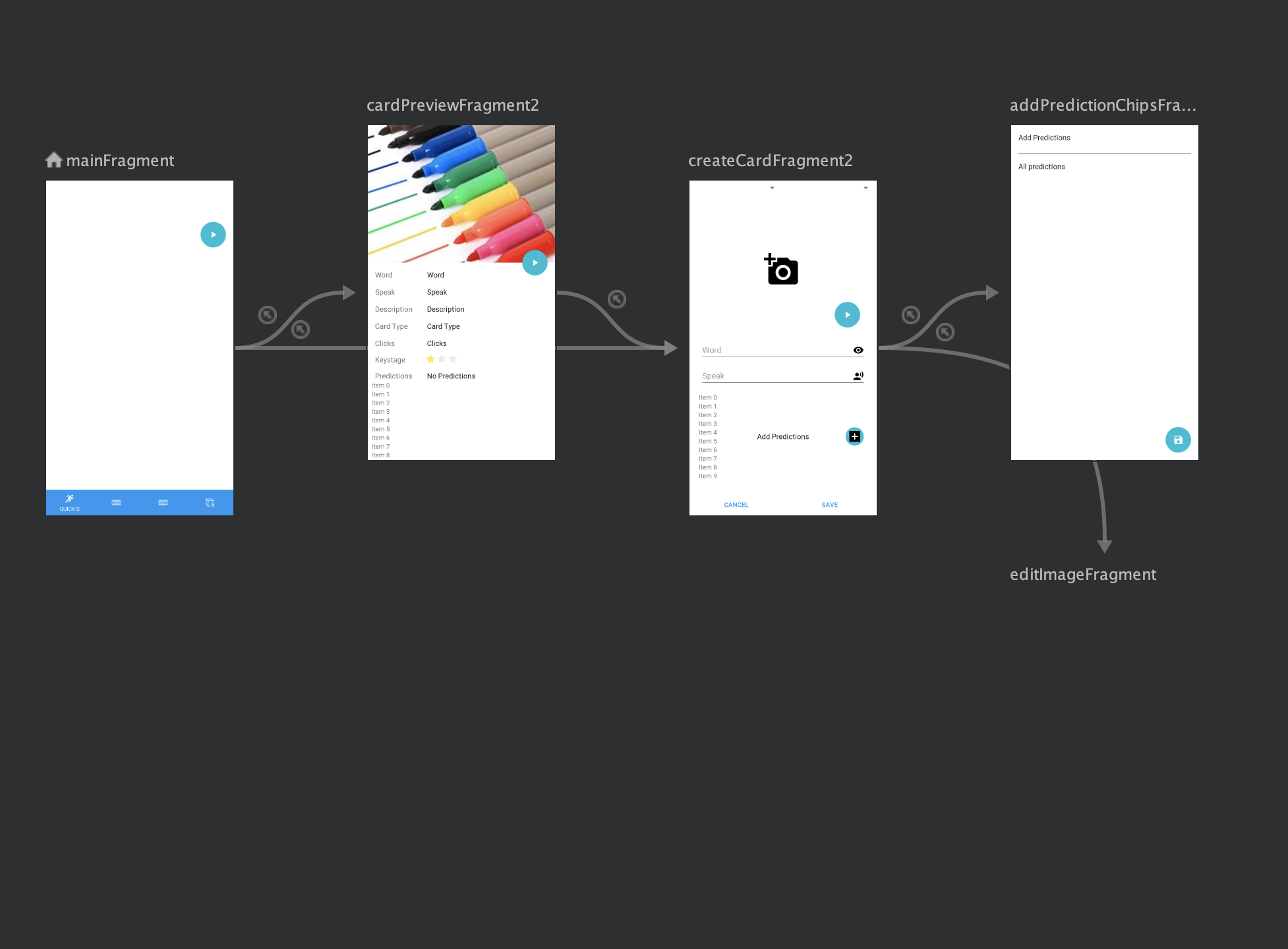I'm using the navigation component, I want a view model to be shared between a few fragments but they should be cleared when I leave the fragments (hence not scoping them to the activity) I'm trying to take the one activity many fragments approach. I have managed to achieve this using multiple nav hosts and scoping the fragments to it using getParentFragment but this just leads to more issues having to wrap fragments in other parent fragments, losing the back button working seamlessly and other hacks to get something to work that should be quite simple. Does anyone have a good idea on how to achieve this? I wondered if theres anything with getViewModelStore I could be using, given the image below I want to scope a view model to createCardFragment2 and use it in anything after it (addPredictions, editImageFragment, and others i haven't added yet), but then if I navigate back to mainFragment I want to clear the view models.
BTW I cant just call clear on mainFragment view model store as there are other view models here that shouldn't be cleared, I guess i want a way to tell the nav host what the parent fragment should be which I'm aware isn't going to be a thing, or a way to make the view model new if I'm navigating from mainFragment or cardPreviewFragment


ViewModelusingViewModelProviders, you need to supply a context. In the case of a fragment, you putthis, so theViewModellife gets scoped to the fragment.ViewModelProvidersis intelligent enough to distinguish between an activity or a fragment context. In case when registering observables, you should register observers inonActivityCreatedusingviewLifeCycleOwneras a context of observer. This makes the observer live according to a fragment`s lifecycle. – Barfuss